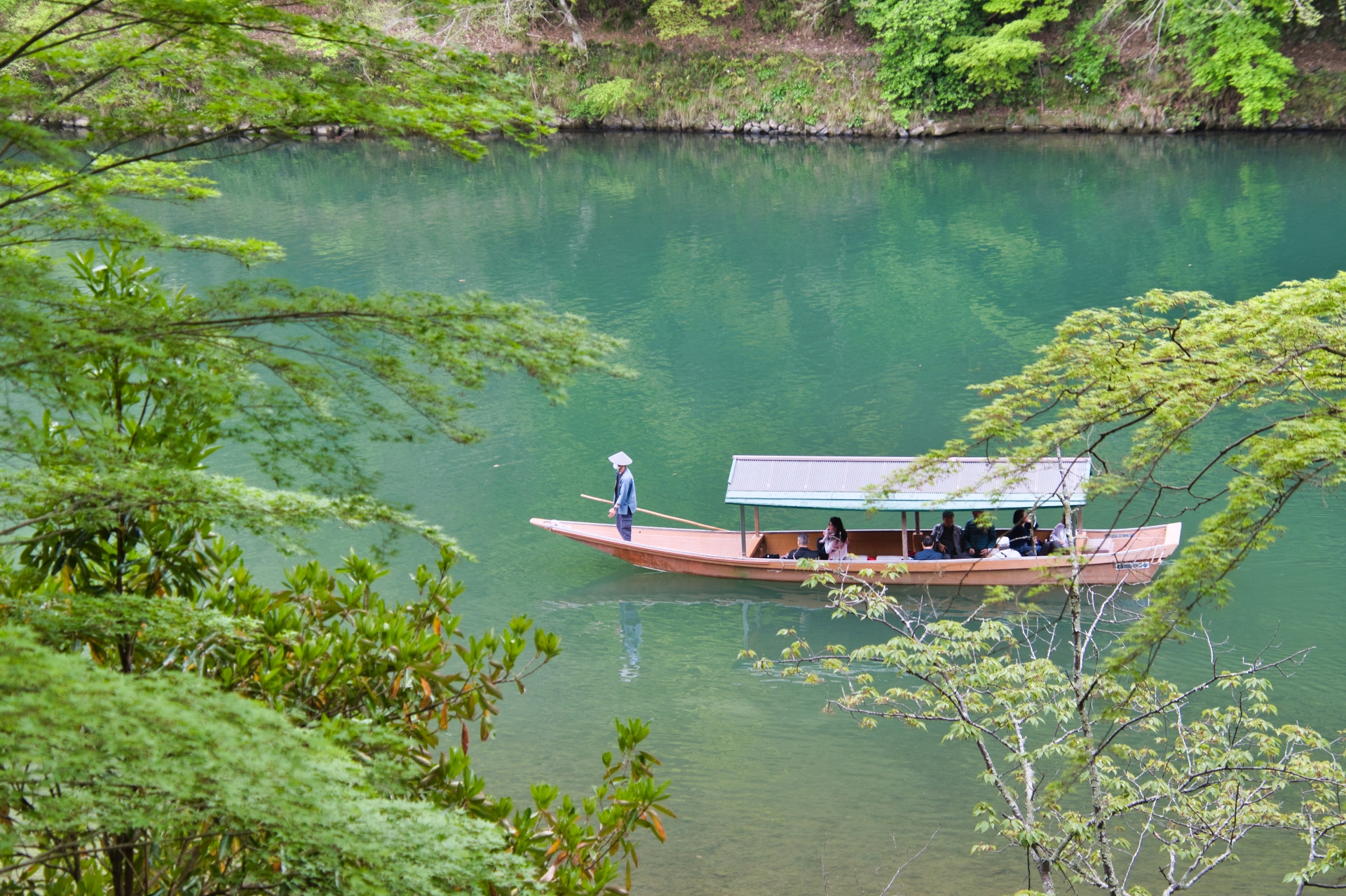
A houseboat is a great opportunity to experience Japanese history and traditional culture. You can enjoy Japanese cuisine and traditional Japanese cuisine, and feel the Japanese atmosphere with tatami and tatami rooms.
This article explains the traditional history, cuisine, and prices for foreigners visiting Japan who want to experience a houseboat. We’ll also introduce some things to keep in mind when riding a houseboat, so let’s experience a houseboat in Tokyo and get a feel for its charm and Japanese history.
■What is the history and background of houseboats?
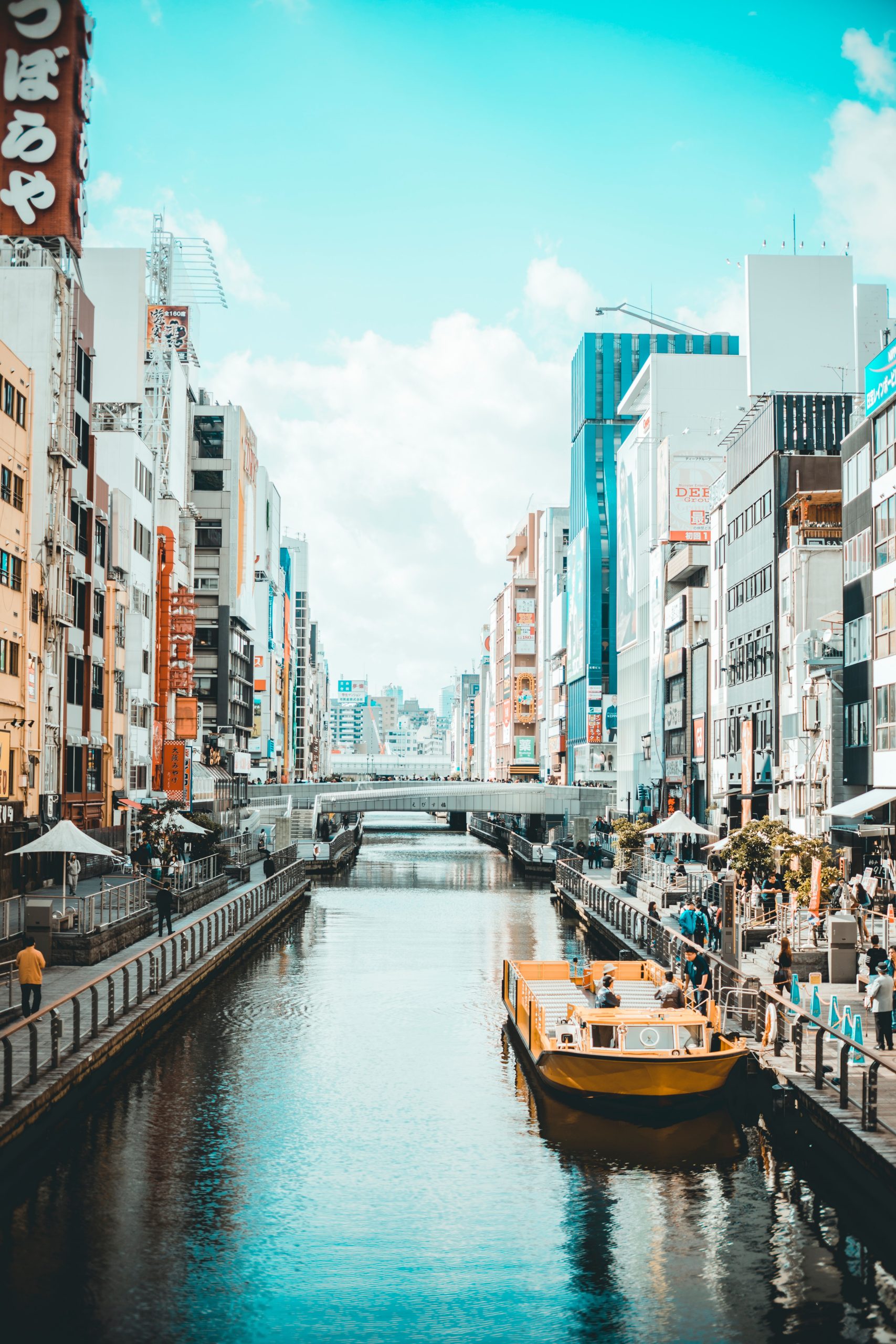
It is said that houseboats began in the Heian period. At that time, boating was popular among the upper class. It is said that they were spending an elegant time on the boat, reciting waka poems. In the Edo period, shoguns, feudal lords, and wealthy merchants began to go boating. After that, it declined due to the effects of World War II and river pollution, but it regained its popularity during Japan’s bubble period (1986-1991 ) and has taken root in its current form.
Nowadays, it is used for events such as weddings, entertainment, and year-end parties, and has become a popular vehicle for people of all ages. It is one of the popular activities among foreign visitors to Japan.
■Introducing the charm of Tokyo houseboats
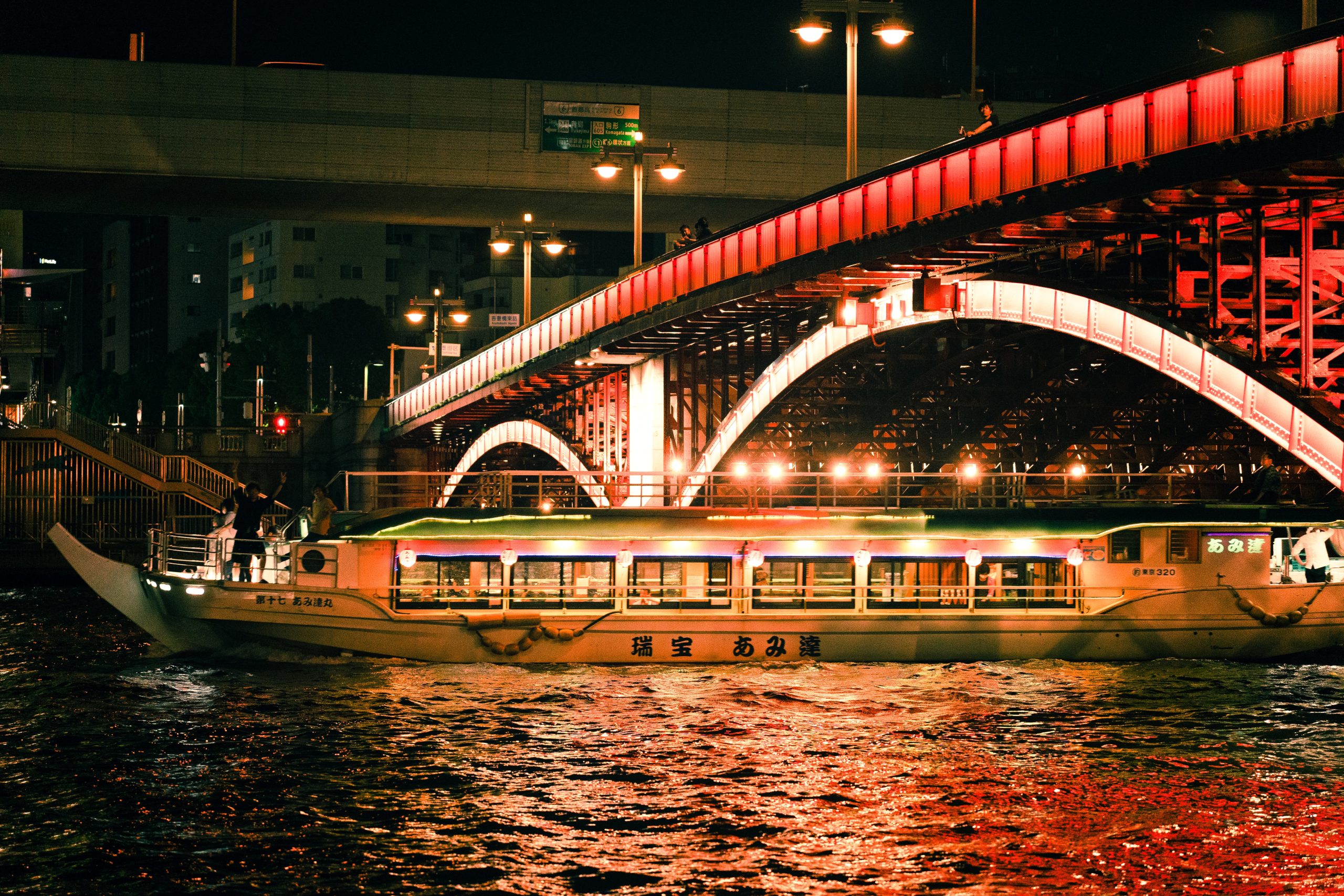
Houseboats are very popular among foreign visitors to Japan of all ages. What is the appeal of street food boats? There are two main attractions:
● You can experience traditional Japanese culture
● Enjoy beautiful scenery and night views
I will explain them one by one.
You can experience traditional Japanese culture
You can experience Japanese tradition by riding a houseboat. The exterior and interior of the float boat have a Japanese-style design, and you can feel the traditional Japanese space with tatami and sliding doors. The food served is mainly Japanese cuisine, so one of the attractions is that you can enjoy Japanese food culture.
The courteous treatment of the staff on board is another reason why it is a popular tourist spot among foreign visitors to Japan, as it allows them to experience the spirit of Japanese hospitality. These days, there are many houseboats that have staff who can speak English and provide flexible accommodation for foreigners visiting Japan, so you can board the boat with peace of mind.
Enjoy beautiful scenery and night views
The view from the houseboat is beautiful, and the main attraction is that you can enjoy the scenery of Tokyo. You can enjoy the four seasons of Japan, such as a course where you can enjoy cherry blossoms in spring and a fireworks display in summer. At night, you can see famous buildings such as Tokyo Tower, Odaiba, and Rainbow Bridge lit up, which is very impressive and is popular.
You can enjoy different scenery during the day and at night, so it’s a good idea to choose your favorite time of day. Enjoying delicious Japanese food and drinks while admiring the beautiful scenery on a houseboat is a memorable sightseeing experience.
■Basic information about Tokyo houseboats
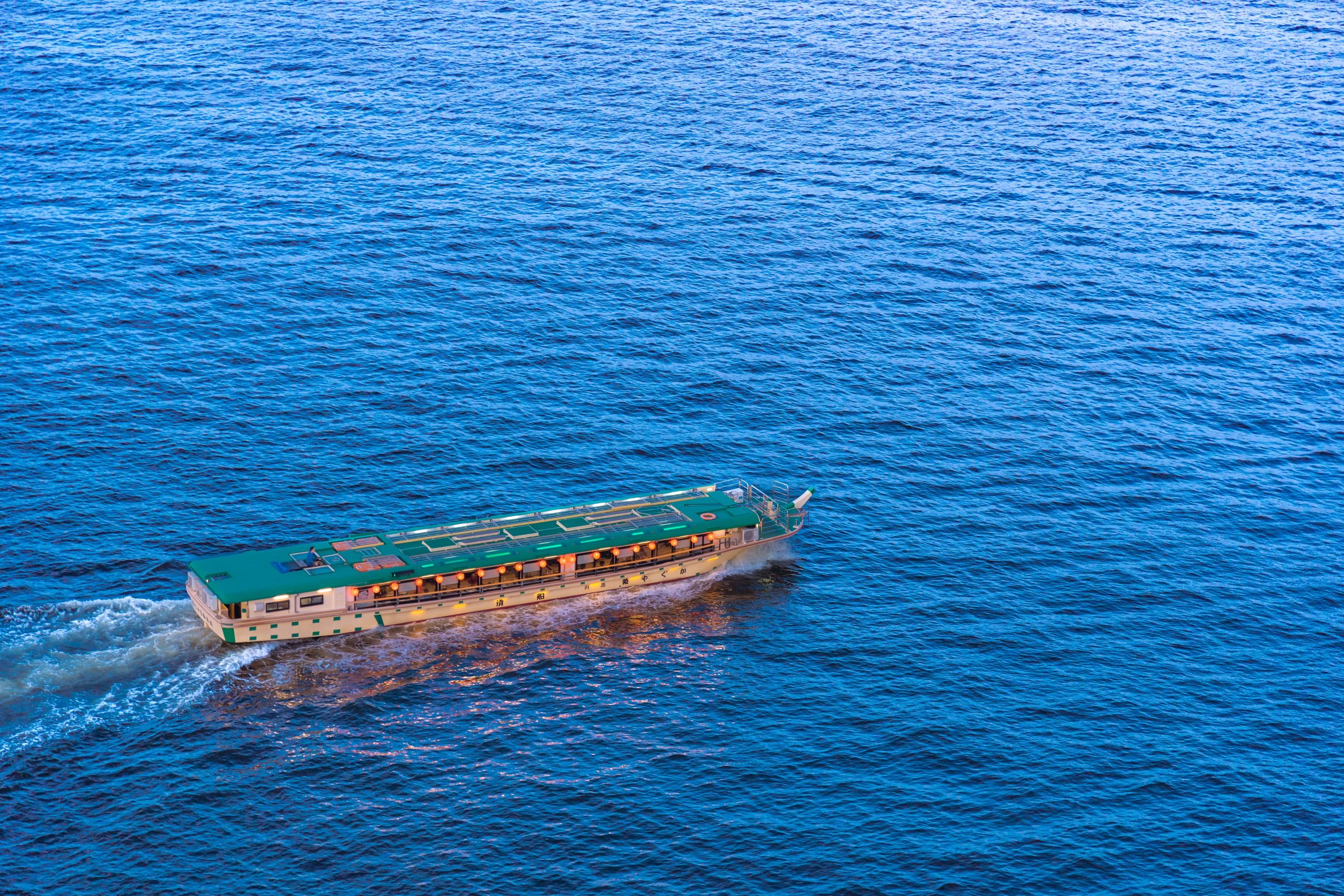
If you are boarding a houseboat for the first time, you may be unsure of the ship’s facilities and may be concerned about what kind of food will be served. From here, I will introduce what kind of vehicle a houseboat is. If you know the following three pieces of information, you will be able to board the ship without any worries.
● Houseboat equipment
● Fees and usage
● cooking menu
Now, I will explain them one by one.
Houseboat equipment
These days, many houseboats are equipped with the latest equipment to make your stay more comfortable, including flush toilets and air conditioning. In addition to tatami mats, some houseboats are equipped with sunken kotatsu and chairs so that foreigners visiting Japan and the elderly can board comfortably.
Although this does not apply to all street boats, there are some houseboats with sky decks, and they are built in such a way that you can fully enjoy the scenery, so you won’t get bored. The Sky Deck may be prohibited due to weather, so please follow the instructions from the staff on the day of your visit.
Fees and usage
There are two ways to use a houseboat: chartering and sharing . Private rooms are often used for year-end parties and parties. If you are boarding with a small number of people, you will be sharing the ride with other passengers.
Prices vary depending on the boathouse, but standard courses often start from around 11,000 yen. Prices may have increased recently due to soaring food prices, so you will need to confirm the exact amount just before enjoying the food boat ride.
Be sure to make reservations by phone or online, as it gets crowded on weekends, cherry blossom and fireworks seasons, and the end of the year. It’s best to make a reservation even on weekdays. The houseboat ride takes about 2 hours and 30 minutes, so you can enjoy it at your leisure.
cooking menu
The main food menu on the houseboat is Japanese food, with many items including tempura, sushi, and assorted sashimi, and you can enjoy dishes made with fresh ingredients. The presentation of the food is delicate and beautiful, giving a sense of Japanese style, and is visually enjoyable. If you don’t like fish, there are some boats where you can enjoy okonomiyaki and monjayaki, so you can choose according to your preference.
Some ships offer vegetarian courses for foreigners visiting Japan, so even vegetarians can enjoy the cruise with confidence. Many courses come with all-you-can-drink options, so you can enjoy the scenery while drinking.
■Precautions and etiquette for Tokyo houseboats
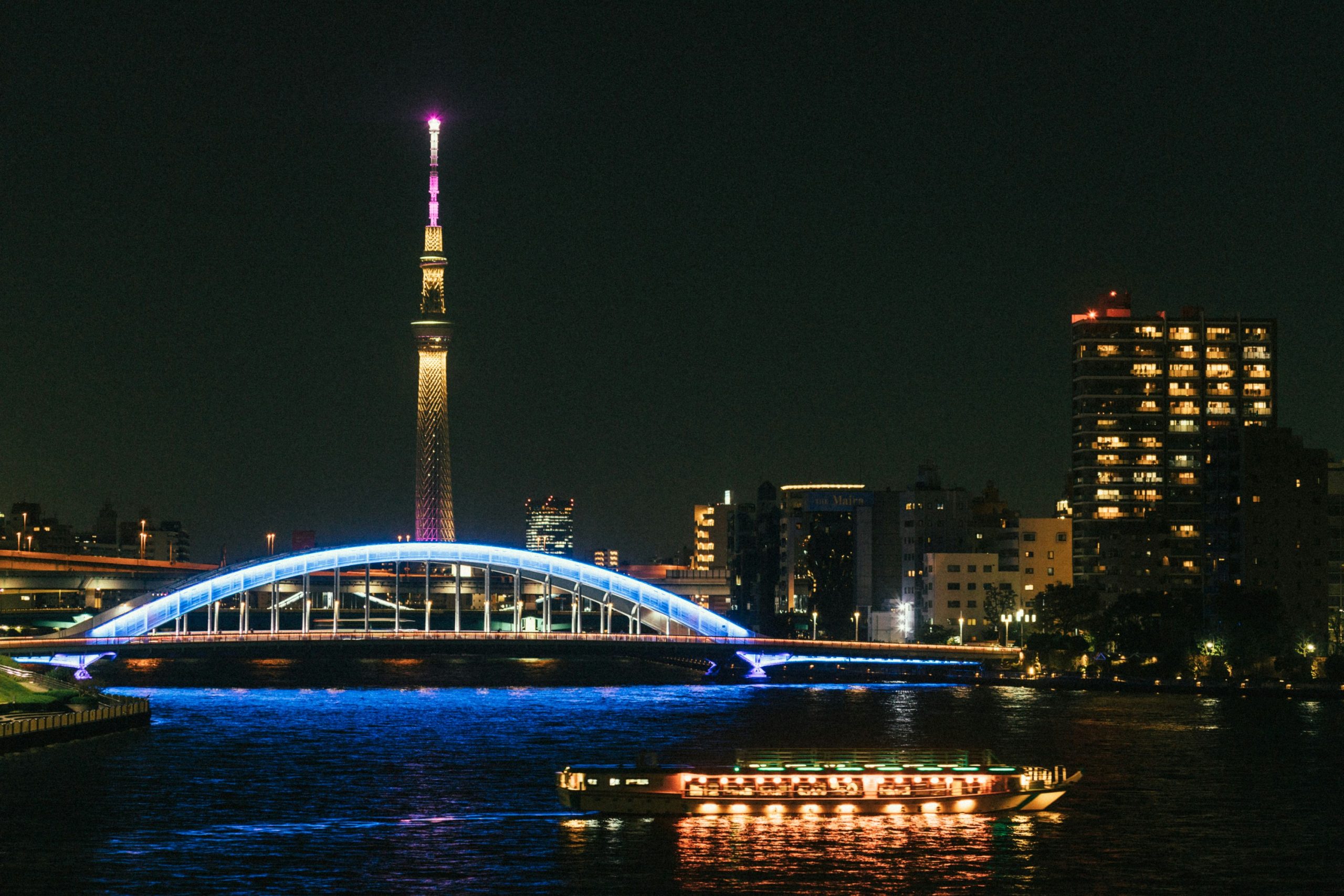
We will introduce precautions and etiquette when riding a houseboat. There are five main points to keep in mind:
● No lateness allowed
● Check seat type
● bring motion sickness medicine
● Beware of cancellation fees
● Take measures against the cold
Let’s look at them one by one.
No lateness allowed
The houseboat departs on time, so late arrival is strictly prohibited. Be sure to be on time, as if you are late, the ship may not be able to leave forever and cause inconvenience to other passengers. Each houseboat has an average of a few dozen passengers, and the staff has a strict schedule. Be careful, as being late will delay all your plans.
If you arrive at the meeting point 15 minutes early, you won’t have to worry about being late. The boarding location will vary depending on the course you choose, so checking in advance will help you arrive without hesitation. Please note that if you are late and miss your ride, you will not receive a refund.
Check seat type
Houseboats include tatami room types, chair and table types, and sunken kotatsu types. The tatami room type gives you a taste of Japanese culture, but if you’re not used to it, there’s a good chance you’ll feel tired. If you are worried about the tatami room, it would be a good idea to book on a ship that offers chairs and tables or horigotatsu.
Although you can move around if you have an observation deck, you will spend a lot of time sitting on a houseboat while being served food and drinking alcohol. Please consider your seat selection carefully before making your reservation.
bring motion sickness medicine
Houseboats that operate on rivers do not sway much, so you are less likely to get seasick, but they may sway depending on the weather. Also, be careful as houseboats that operate on the ocean rather than rivers are prone to swaying. If you regularly get motion sickness, it is a good idea to bring motion sickness medicine with you. Lack of sleep makes it easier to get sick, so make sure you’re in good shape on the day you ride the houseboat.
If you are prone to seasickness, it is important to sit in the center of the boat, where there is less rocking, and to be careful about the amount of alcohol you drink. If you feel sick, open the window to change your mood and get a plastic bag from the staff to take precautions.
Beware of cancellation fees
Once you have booked a houseboat, be careful about cancellation fees. In most cases, if it becomes inconvenient on the day of your reservation, you will be charged a 100% cancellation fee. Cancellation fees may apply from 20 days before the reservation date, or from the time of reservation. Be sure to make a reservation on the day you can go.
It is essential that you notify us of your cancellation, as any cancellation without prior notice will cause inconvenience to the boat hostel and other passengers. If the tour is canceled due to circumstances on the stall boat side, such as bad weather, there will be no cancellation fee.
Take measures against the cold
Houseboats are air-conditioned so you can stay comfortable, but the observation deck can feel cold. It often feels cold on the water even on warm days, and if you get cold and feel unwell, you won’t be able to enjoy the houseboat ride. You can enjoy the houseboat experience comfortably by wearing jackets such as cardigans to regulate your body temperature. Don’t forget to take measures to protect yourself from the cold even during the warm season.
■Make memories by experiencing a houseboat while sightseeing in Tokyo!
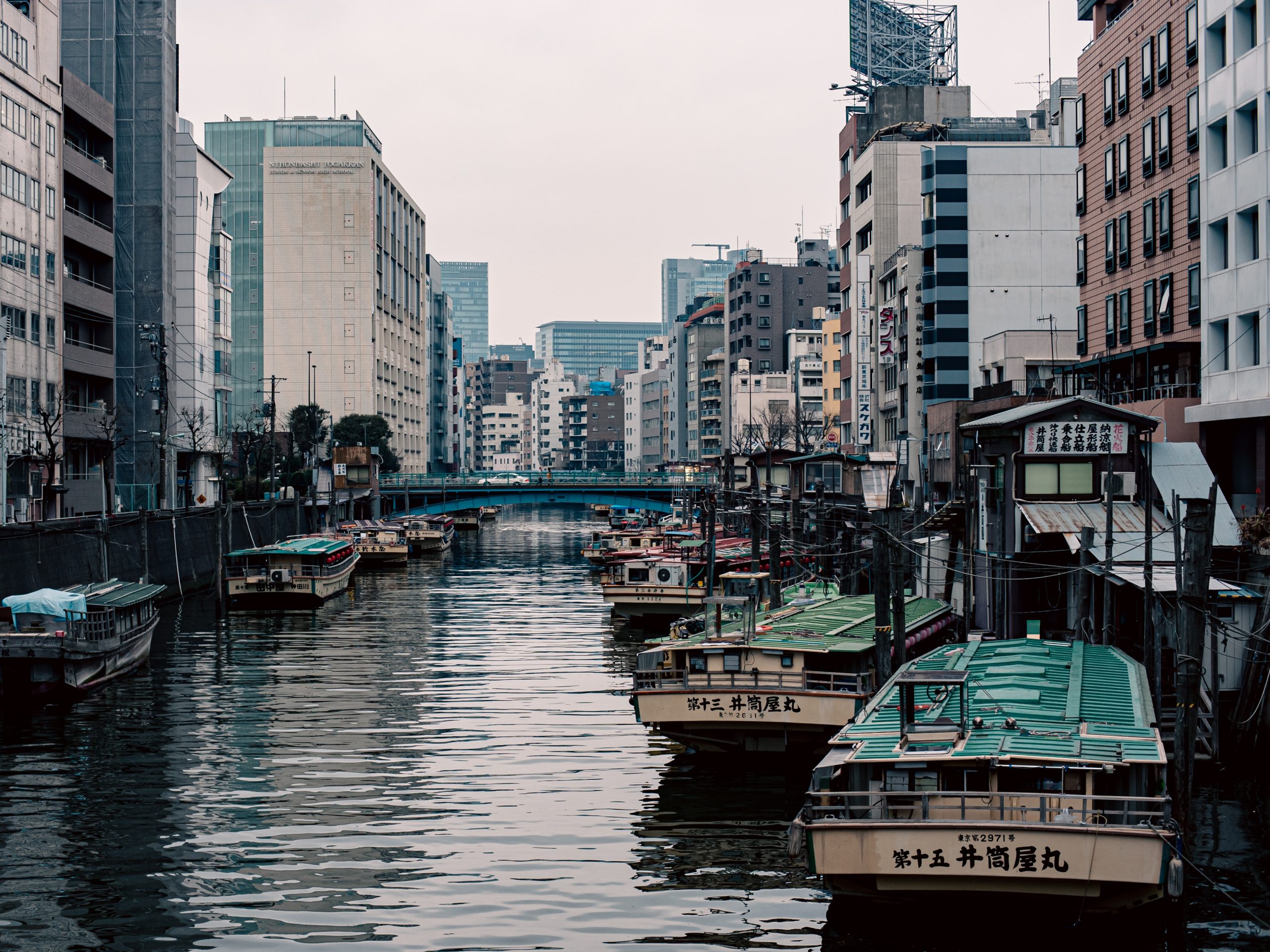
Houseboat riding in Tokyo is one of the most attractive activities that allows you to experience traditional Japanese culture. You will be able to see the beautiful scenery of Tokyo during the day and night, making it a fulfilling sightseeing experience. Modern houseboats are fully equipped, so you can spend your time comfortably.
Houseboats are popular, so it’s a good idea to make a reservation. Also, the food stall boats depart on time, so it’s best to check where you board to avoid being late. Experience Tokyo sightseeing on a charming houseboat and create fun memories.
Q&A
Q.Do you sail even if it rains?
A. We will sail during normal rain, but in the case of a typhoon or strong winds, it may be canceled.
Q.How many people can the houseboat accommodate?
A. Generally, there are many boats with about 30 to 50 people.

